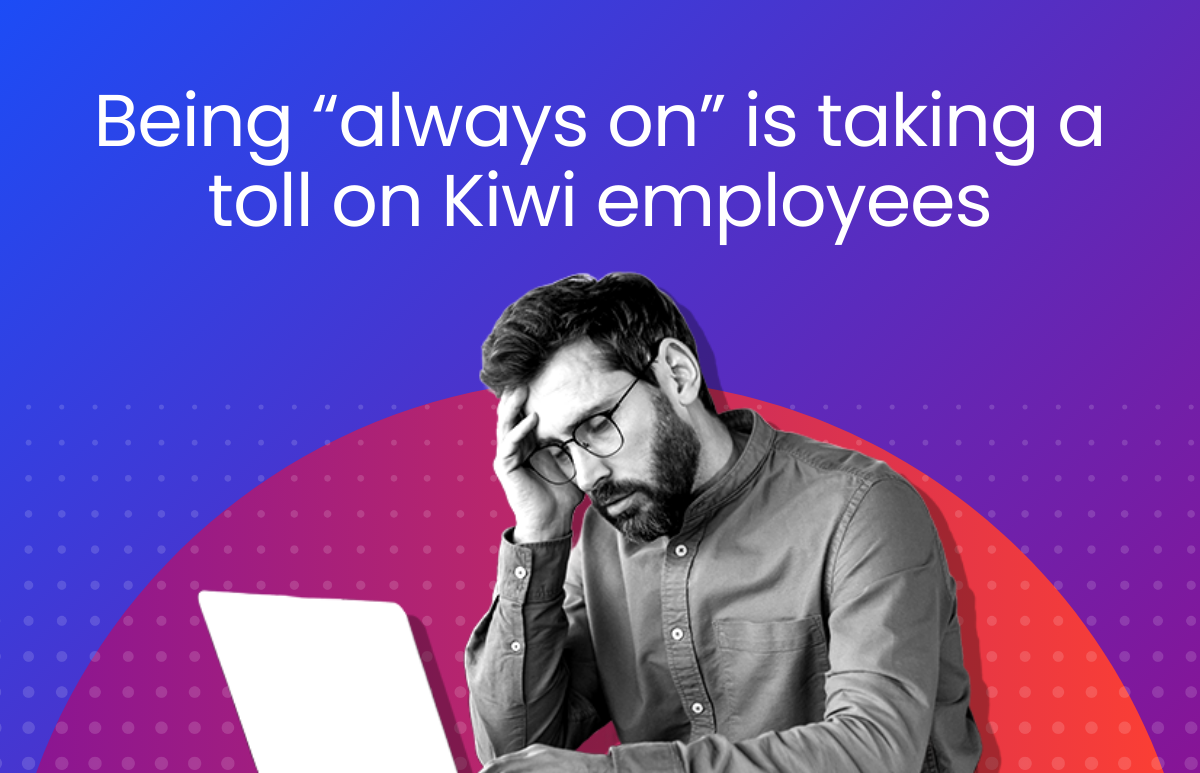Presenteeism: Working While Unwell Risks and Solutions
Untreated mental health conditions have a devastating financial impact on Australian workplaces, costing a staggering $10.9 billion per year.

Of this figure, presenteeism accounts for an alarming $6.1 billion in lost productivity. This highlights the hidden cost of employees struggling with their mental well-being while at work.
What is presenteeism?
Presenteeism is when you’re physically at work, but your mind is elsewhere because of illness, stress, or other issues. Unlike absenteeism, where employees are absent, presenteeism is harder to track and its impact can be even more damaging.
Understanding presenteeism is crucial because of its significant toll on businesses and employee well-being. By examining the causes and consequences of presenteeism, we can create healthier and more supportive work environments.
What presenteeism looks like?

Presenteeism can manifest in many ways, some obvious and others more subtle. Here are common scenarios:
Common examples of presenteeism
Coming to work with contagious illnesses
Too often, workers feel pressured to come into work even when battling colds, flu, COVID-19, or other contagious illnesses. This practice endangers colleagues while also harming the ill employee’s productivity and well-being. Presenteeism persists because many work cultures still subtly (or not so subtly) discourage taking sick days. Letting employees work from home can stop sickness from spreading and give them time to get better without coming to work.
Overworking/overtime despite feeling burned out
Employees often overwork, they take on extra duties, work excessive hours, and skip breaks. This happens even when they are mentally and physically exhausted. Pushing through burnout can backfire, leading to plummeting productivity, poor concentration, increased mistakes, and health issues from unrelenting stress
Vacation ‘Check-Ins’
Employees frequently feel pressure to monitor and respond to electronic communications during personal days off. Constant connection prevents proper rest and recovery. This hampers their ability to return recharged, focused, and productive.
The ‘Hidden’ nature of presenteeism
Presenteeism isn’t always as easy to identify as absenteeism. Someone might be physically present, but their focus, productivity, and quality of work can suffer significantly because of:
- Mental health struggles like stress, anxiety, or depression can make it hard to focus and make decisions, even if you don’t seem unwell on the outside.
- Employees may struggle with ongoing health issues or chronic pain. This can make it hard for them to do their best work, even if they come into the office.
- Stress at home makes it harder for employees to focus at work.
Presenteeism’s hidden nature makes it tricky to address. Managers and team members might not even understand how much productivity is being lost.
What causes presenteeism?

Presenteeism stems from a complex mix of workplace culture and individual factors. Let’s examine each in more detail:
Workplace culture
Workplace culture plays a significant role in fostering presenteeism. When employees fear punishment for taking time off, they feel immense pressure to come to work even if they’re sick.
Workplaces that promote unrealistic expectations around constant availability and excessive workloads mainstream the idea that employees should sacrifice their wellbeing to be present.
Additionally, strict sick leave policies leave people with no choice. They must risk their health or lose needed income.
Individual factors
Presenteeism can also happen because of an employee’s personal beliefs. Some people wrongly think that being dedicated to their job means always being at work, even when they’re sick or not productive.
For those without enough paid leave or financial security, the fear of losing income can force them to work even when ill or stressed.
Additionally, job uncertainty can make employees worry that missing work will make them seem less dedicated or easily replaced. This fear can push them to come to work even when they are not feeling well.
Identifying that presenteeism is often the result of a combination of these cultural and individual factors is important. Understanding the root causes is the first step towards creating healthier, more supportive, and ultimately more productive work environments.
What are the negative impacts of presenteeism?

Presenteeism has far-reaching consequences for both employees and the companies they work for. Let’s examine its detrimental effects in detail:
Bad effects on employee wellbeing
Presenteeism poses serious risks to employee wellbeing. Working while sick or injured prevents proper recovery and can exacerbate existing health problems, both physical and mental. Pushing through illness can lead to complications and lengthen recovery time, creating a negative cycle.
Persistent pressure to be present at work, regardless of health, contributes to chronic stress and heightens the risk of burnout. This state of exhaustion negatively impacts both mental and physical well-being.
Over time, a culture of presenteeism erodes morale. When employees feel undervalued and unsupported, they become disengaged, lose interest in their tasks, and experience lower job satisfaction.
Company-wide effects
Presenteeism has significant company-wide repercussions. While it may seem illogical, presenteeism greatly reduces overall productivity. When employees are sick, stressed, or distracted, they have trouble focusing, make more mistakes, and struggle to make good decisions.
Sick employees spread illness at work, harming everyone’s health and output. This leads to a ripple effect of absences and further productivity loss.
Finally, presenteeism breeds a toxic culture where people feel unsupported and pressured to give priority attendance over their health. This damages morale, increases disengagement, harms the company’s reputation, and can even lead to higher turnover rates.
Presenteeism is harmful in the long run, outweighing any short-term benefits it might seem to offer. Companies that focus on employee well-being and allow for rest have healthier, happier, and more productive workers.
How to reduce presenteeism in the workplace?

Tackling presenteeism requires a complex approach and a commitment to change from both companies and individuals. Here are key strategies to address this issue:
Cultivate a positive culture of well-being
Businesses must focus on employee well-being as a core value and actively foster a sense of belonging. This requires moving away from cultures that unknowingly reward presenteeism. Instead, create an environment where employees feel genuinely supported in taking care of their physical and mental health.
Practical actions include offering flexible work arrangements, boosting mental health wellbeing, and proactive well-being programs. These initiatives not only boost employee experience and health but also improve employee engagement and reduce stress.
Lead by example
To truly combat presenteeism, leaders must inspire their teams. Managers should show good habits by taking time off when sick, giving reasonable workloads, and putting employee well-being first. When leaders walk the talk, it sends a positive message throughout the business This encourages others to focus on their health and creates a more supportive culture.
Revise leave policies
Implement flexible and generous paid sick leave policies. This is crucial for ensuring employees can take time to recover without fear of job loss or financial hardship.
Offer mental health days or personal days alongside sick leave. This identifies that well-being isn’t just about physical health. These actions demonstrate a commitment to employee well-being and a supportive work environment.
Address workload and expectations
Unrealistic workloads and constant pressure to always be “on” are major drivers of presenteeism. Companies should regularly assess workload distribution and expectations of employees. Work collaboratively to create sustainable work plans, focus on tasks effectively, and address any bottlenecks or incompetence that might be contributing to overwhelm.
Promote open communication
Encourage open dialogue about presenteeism and actively work to demystify the need for breaks and recovery time. Train managers to identify the signs of presenteeism and address them in a supportive, non-punitive way. Open communication builds a culture that prevents burnout and supports optimal performance.
Addressing presenteeism demands effective communication and continuous commitment and effort from everyone in the business. Workplaces that implement well-being strategies and a supportive culture see improved health, happiness, and productivity among employees.
Wellbeing programs
Invest in employee well-being programs that go beyond just physical health. This could include access to mental health resources, stress management workshops, team building activities, and initiatives that promote work-life balance. Proactive signals a commitment to support employee well-being and helps prevent the issues fueling presenteeism.
 HR Core
HR Core 









